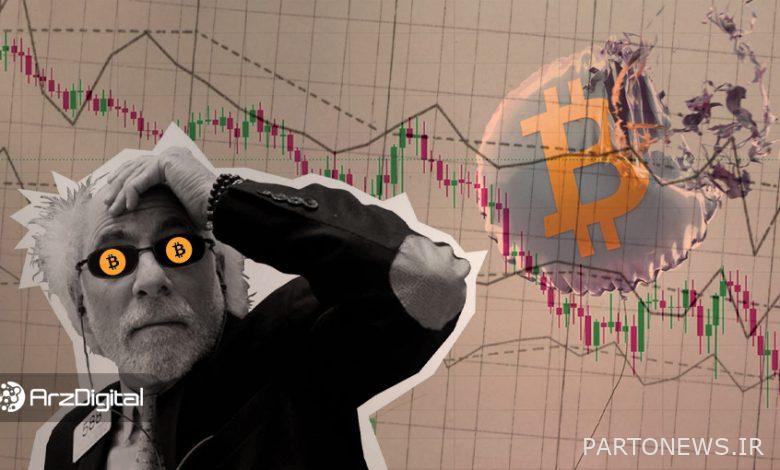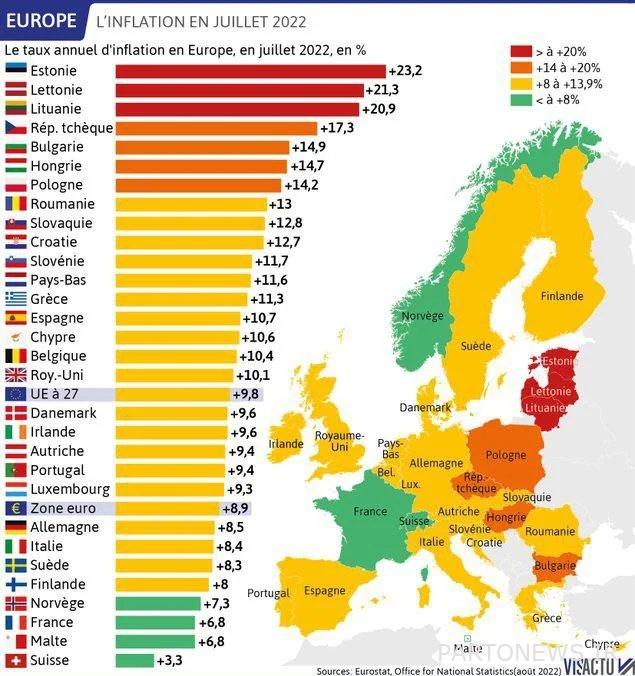Note: Cryptocurrencies will be anti-inflationary, but not in the near future

Bitcoin is easy to access, has a predictable supply, and central banks cannot arbitrarily manipulate it. As a result, Bitcoin should act as a hedge against inflation. However, investors generally do not see Bitcoin as an anti-inflationary asset. On the other hand, the performance of the digital currency market is highly correlated with the stock market; But why does this happen?
One of the authors of Cointelegraph website a note who wrote to answer this question, also raises two other important questions; What prevents cryptocurrencies from becoming anti-inflationary assets, and what could happen to make them a tool to combat inflation?
Problems ahead in the path of becoming an anti-inflationary asset
Cryptocurrencies offer a unique alternative solution by abandoning the centralized governance of banks. Consequently, you cannot lose faith in something that does not exist (centralized governance). Also, the supply of cryptocurrencies is (usually) limited, so they naturally increase in value.
People using blockchains based on proof-of-stake protocols can access their assets at any time. While they continuously receive interest from their current (invested) balance. This means that the real value of the “percentage of annual profit” is tied to the economic activity within the network through the mechanism of the reward distribution of the stake and the treasury.
Although these features seem to solve the problem of inflation in traditional monetary systems, some problems in digital currencies still remain. To begin with, let’s examine the reasons why people invest in digital currencies and hoard them.
Most cryptocurrency investors see the (probable) future potential of these technologies and believe that some of these assets are undervalued than they should be. These types of investments are speculative. Bitcoin has managed to create a decentralized structure, however, the problem of its high energy consumption cost has not yet been solved, and the majority of miners are gathered together in only a few special mining pools. Ethereum, similar to Bitcoin, is involved in the issue of energy consumption and the concentration of mining pools (of course, with the network update in September this year, Ethereum mining will end). With more than $1.2 billion in stolen capital this year, the Ethereum network is also struggling with many security issues.
Another issue is decentralized exchanges, which are still not as convenient as centralized exchanges. UniSwap, the largest decentralized exchange in terms of transaction volume, is still inefficient in terms of pricing compared to a centralized exchange. A simple transaction to convert 1 million Tether to USDCoin will cost more than $30,000 and slip in price compared to when done on a centralized exchange.
Read more: Which is the most decentralized digital currency in the market?
These technical problems have solutions
Obviously, these problems are on the way to be solved. Several third-generation blockchains are working on energy consumption and decentralization issues. User privacy has been improved. Cryptocurrency investors accept that their wallets will be fully traceable forever. This will appeal to new users who were previously skeptical about blockchain transparency.
Currently, projects to solve the inefficiency problem of decentralized exchanges seek to combine the accuracy of traditional financial mathematics with the native features of digital currencies. Digital currencies must first be widely accepted in order to act as a hedge against inflation. These assets have future value in the ecosystem they are now trying to establish.
The cryptocurrency economy is still waiting for applications that take full advantage of decentralization without sacrificing quality and user experience. These programs are particularly important in the issue of widespread adoption. A payment system where each transaction costs $5 and the exchange value changes regularly will not work.
Until market-leading cryptocurrencies are effectively used for real-world payments and decentralized applications reach the desired level of utility similar to centralized systems, cryptocurrencies will be considered growth stocks.
Inflation is caused by a lack of confidence
Inflation is not caused by simply printing more money, meaning that the existence of an asset does not automatically depreciate its value. Between September and November 2008 (September to November 2008), the amount of several billion dollars in circulation in the United States tripled; But inflation decreased.
Inflation is more related to people’s distrust of the central monetary system. The combination of mistrust with rising prices, along with confusion over the payment of aid packages during the Corona pandemic and problems created in the supply chain, partly accelerated by the war in Ukraine and Russia, has put us in this economic crisis. However, massive money printing in 2021 did not cause inflation, although it did make it bigger.
The asset supply alone is not an important issue for a store of value currency. In fact, store of value is not necessarily related to circulating supply. For example, the volume of gold stored in the form of jewelry and bullion is more than its volume in the commodity market. A market that would have a completely different price if you took into account all the gold mined on Earth. Since these gems and gold bars are not traded in the market, they will not have an effect on the supply and demand curve. This feature also applies to money.

Inflation is caused by the loss of confidence in an asset that is supposed to maintain its value over a long period of time. In our world, the supply of most goods is limited, so any group that becomes aware of an increase in supply but is uncertain about monetary policy will automatically factor its uncertainty into prices. As a result, inflation becomes a self-fulfilling prophecy (that is, the groups themselves cause behaviors and actions that ultimately help the same prediction become reality).
Anti-inflation of digital currencies is possible; But not now
Digital currencies cannot yet act as a tool for hedging risk in times of extreme volatility and lack of confidence in the market. They are said to typically excel in environments where growth is stable, where they can easily outperform other financial markets, and the low market capitalization of digital currencies compared to fiat currencies plays in their favor.
Current solutions to solve the usability problem are not yet sustainable due to the speculative nature and low transaction volume of digital currencies. The collapse of blockchains with the wrong financial structure affects the entire ecosystem and derails the development train of potential long-term solutions. As the digital currency community becomes more responsible and cautious, healthy and reliable protocols will benefit more and eventually digital currencies can become a true anti-inflationary asset.
Since digital currencies are now highly correlated with growth patterns in the stock market, they are a good hedge against inflation during periods of stable growth; But they fail during financial crises. The evolution of digital currencies during these recessions can make them a real bulwark against inflation.
These days, it would be wise to exercise caution when investing in cryptocurrencies during periods of market turbulence. In fact, using these digital assets as The only means of capital preservation Against inflation, it is irrational. As blockchain protocols continue to mature, this situation will change and we will see an increase in the adoption and stability of digital currencies as anti-inflationary assets.

